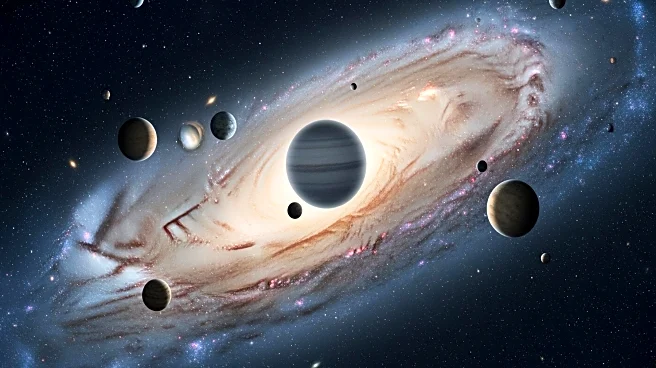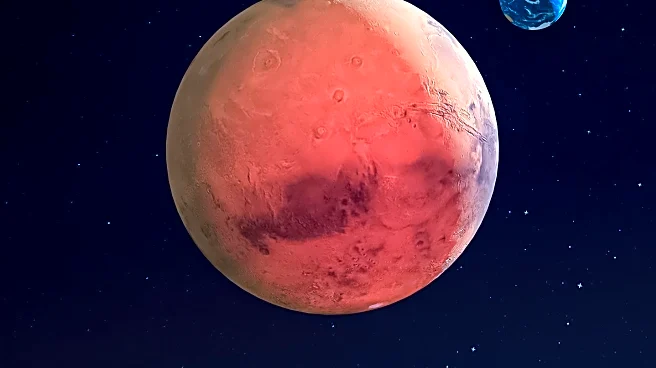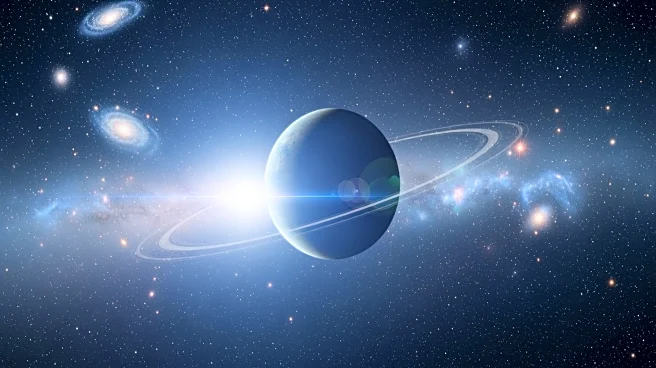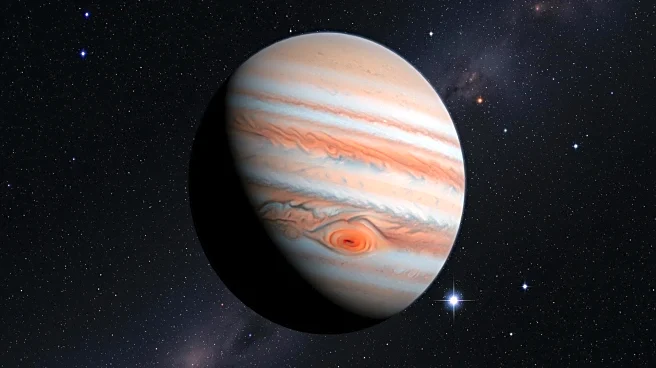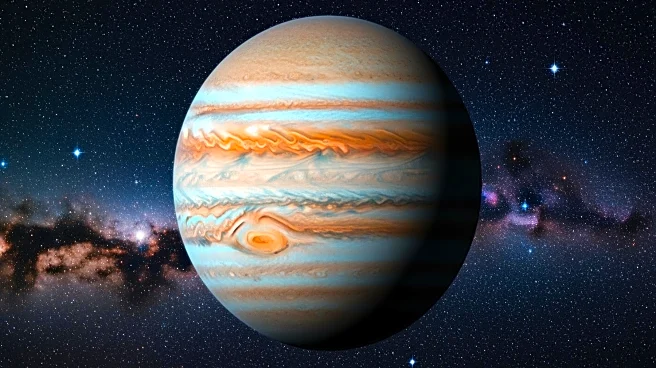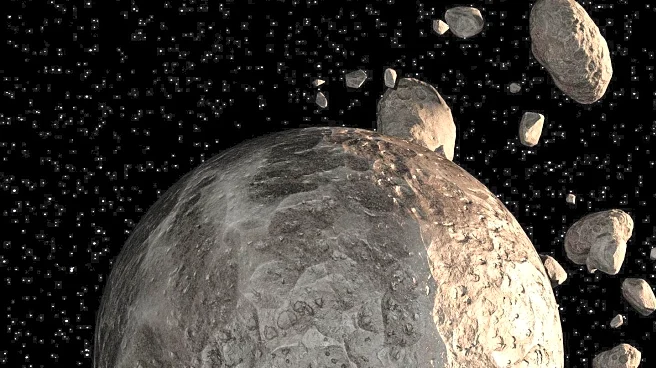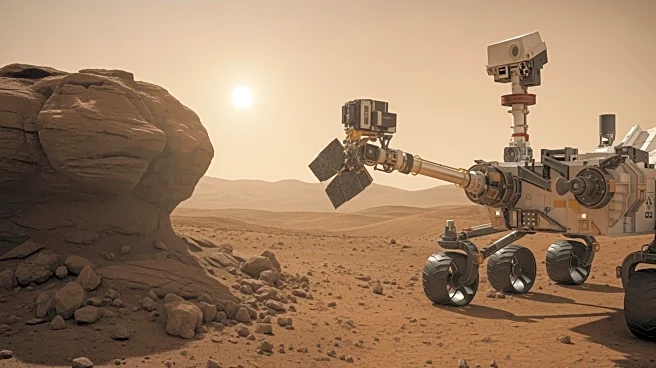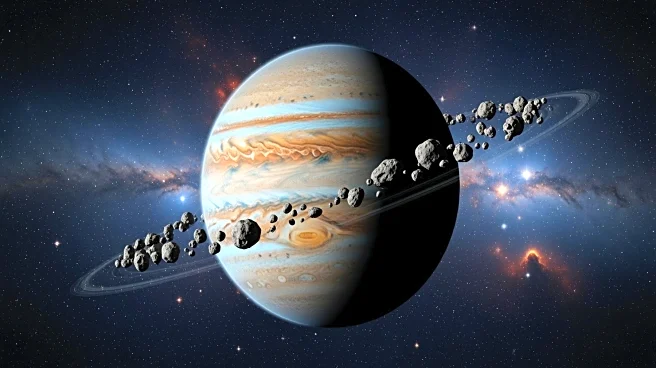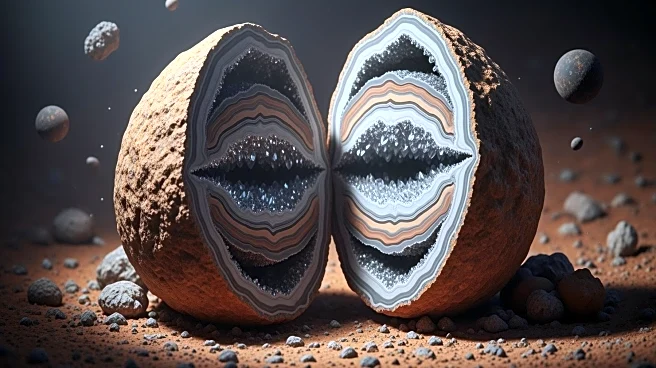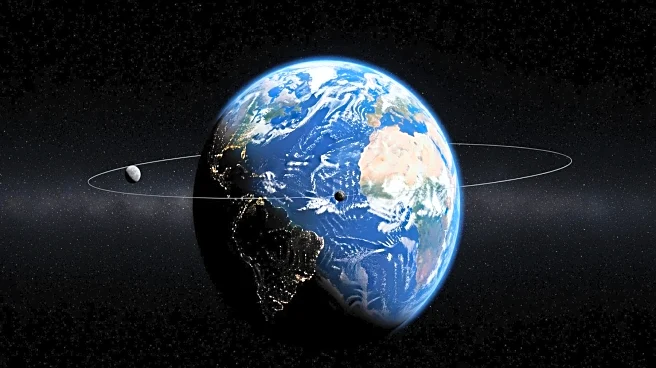What's Happening?
A new study led by scientists at Rice University has uncovered the significant role Jupiter played in the formation of the inner solar system, including Earth. The research suggests that Jupiter's early growth was crucial in preventing the material that would
eventually form Earth, Venus, and Mars from spiraling into the sun. By cutting off the flow of gas and dust towards the inner solar system, Jupiter's gravity stabilized the orbits of the inner planets and influenced the solar system's structure. The study utilized computer simulations to demonstrate how Jupiter's massive gravity created ripples in the disk of gas and dust surrounding the newborn sun, forming ring-like bands that acted as 'cosmic traffic jams.' These bands trapped small dust grains, allowing them to clump together and form the rocky building blocks of planets.
Why It's Important?
The findings of this study have significant implications for our understanding of planetary formation and the unique conditions that led to the development of Earth. By highlighting Jupiter's role in shaping the solar system, the research provides insights into the dynamics of planet formation and the preservation of isotopic signatures found in meteorites. This knowledge is crucial for astronomers and planetary scientists as it helps explain the distinct isotopic fingerprints in meteorites and the delayed formation of certain primitive meteorites. The study also supports observations from the Atacama Large Millimeter/submillimeter Array (ALMA) in Chile, which have shown similar rings and gaps in young star systems, suggesting that giant planets like Jupiter play a critical role in sculpting their surroundings.
What's Next?
The study opens up new avenues for research into the formation of other planetary systems and the role of giant planets in shaping them. Future research could focus on exploring the conditions under which other giant planets might influence the formation of rocky planets in different star systems. Additionally, the study's findings could inform the search for exoplanets with conditions similar to those that led to the formation of Earth, potentially aiding in the discovery of habitable worlds beyond our solar system.
Beyond the Headlines
The research highlights the intricate interplay between planetary formation and the gravitational forces exerted by giant planets. It underscores the importance of understanding the early dynamics of our solar system to comprehend the conditions that made Earth habitable. The study also raises questions about the potential for similar processes occurring in other star systems, which could have implications for the search for extraterrestrial life.
